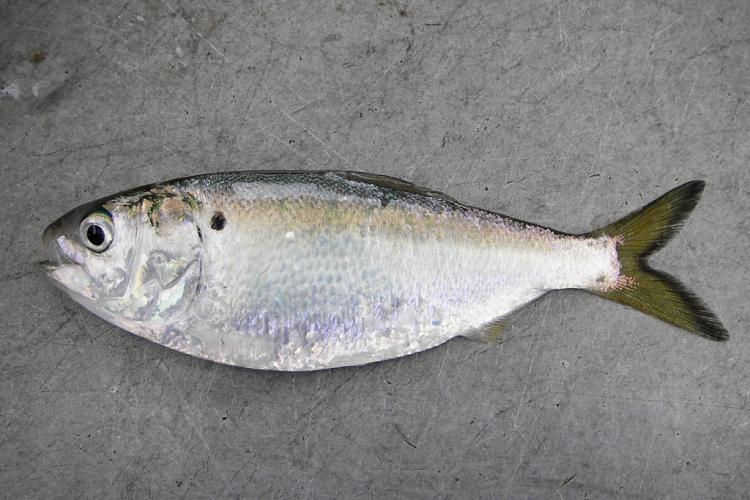HATTIESBURG, MS / ACCESSWIRE / January 12, 2022 / Despite being one of the largest and most high-profile fisheries on the East Coast, there are still gaps in our understanding of Atlantic menhaden. This is especially true in their northern range, in New England and the Mid-Atlantic. But this winter, a new project will look specifically to count menhaden in these areas, shedding new light on an important but underexamined portion of this species.
A team from the University of Maryland Center for Environmental Science's (UMCES) Chesapeake Biological Laboratory and the Virginia Institute of Marine Science in collaboration with NOAA Fisheries is about to launch a winter population survey of menhaden, specifically of menhaden spending the season off the coast of New Jersey. The area is home to a growing winter bait fishery, but because there have been few attempts to survey menhaden this far north, there is currently not a good count of how many menhaden are in the area, as well a lack of good data on measurements like age and weight compositions.
The survey, which will launch from Cape May, New Jersey, will use sonar equipment to estimate the number of menhaden schooling in the area, and will collect additional information to estimate age, size, and weight, data that will be important for managing the fishery.
"Right now, having a full picture of menhaden is limited by the lack of available information on the northern part of the stock," said Dr. Genny Nesslage, a professor at UMCES and one of the lead researchers on the project. "Surveying this part of the population will hopefully give regulators the data they need to make informed decisions on how to manage menhaden coastwide."

Atlantic menhaden. Photo Credit: Virginia Institute of Marine Science
Atlantic menhaden are a coastwide species, with a range spanning from Maine to Florida. But most of our knowledge of the stock comes from data collected from purse seine fisheries in the Mid-Atlantic and around the Chesapeake Bay. Because older, larger menhaden are more likely to be found in northern waters, an entire segment of the menhaden population is not fully counted by current data collection methods.
As it is increasingly clear that there are significant numbers in this northern portion of the menhaden stock, surveys like these will be important in providing a fuller picture of the population, benefitting both the regional bait fishery and other, existing menhaden fisheries.
"Getting a better count of menhaden in the north is critical in improving our understanding of the fishery coastwide, and validating the population estimates that come from our current assessment models," said Dr. Nesslage. "The more diverse sources of data we have on menhaden, the more confident we can be in our decisions on how to manage it."
The survey was funded by the NOAA Fisheries Saltonstall-Kennedy Competitive Grants Program and its design was funded by a grant from the Science Center for Marine Fisheries (SCEMFIS), which connects marine scientists with members of the fishing industry to fund needed research for finfish and shellfish.
About SCEMFIS
SCEMFIS utilizes academic and fisheries resources to address urgent scientific problems limiting sustainable fisheries. SCEMFIS develops methods, analytical and survey tools, datasets, and analytical approaches to improve sustainability of fisheries and reduce uncertainty in biomass estimates. SCEMFIS university partners, University of Southern Mississippi (lead institution), and Virginia Institute of Marine Science, College of William and Mary, are the academic sites. Collaborating scientists who provide specific expertise in finfish, shellfish, and marine mammal research, come from a wide range of academic institutions including Old Dominion University, Rutgers University, University of Massachusetts-Dartmouth, University of Maryland, and University of Rhode Island.
The need for the diverse services that SCEMFIS can provide to industry continues to grow, which has prompted a steady increase in the number of fishing industry partners. These services include immediate access to science expertise for stock assessment issues, rapid response to research priorities, and representation on stock assessment working groups. Targeted research leads to improvements in data collection, survey design, analytical tools, assessment models, and other needs to reduce uncertainty in stock status and improve reference point goals.
PRESS CONTACT
Stove Boat Communications
[email protected]
SOURCE: Science Center for Marine Fisheries




